-
Universities struggle to balance cybersecurity, openness
Since January 2013, more than fifty academic institutions across the country have been targets of cyberattacks, compromising personal information and intellectual property. Unlike other organizations, universities cannot mandate what devices are used to access their networks, and they must accommodate faculty, students, and researchers spread across the globe. Academic network systems are attractive to hackers because they contain valuable intellectual property.
-
-
Planning for future ecological challenges
How can communities dodge future disasters from Mother Nature before she has dealt the blow? Researchers are taking a unique approach to the issue and gaining input and support from community stakeholders. Researchers conducted a series of one-on-one interviews at Big Hole Valley in Montana and Grand County in Colorado to get an array of community contributors thinking and planning for future ecological hazards, and to consider the impact of those decisions.
-
-
Hacking prof’s computer to change a grade is easier than studying
Academic institutions are easy targets since many do not invest in sophisticated IT personnel or employ the latest cybersecurity programs. Some students have noticed this, and more and more universities are facing a new hacking problem: students hacking their professors’ computers in order to improve their grades. “It became so much easier to change my grades than going to class and working real hard,” a Purdie University student told an Indiana court.
-
-
DARPA Grand Challenge: Ten years on
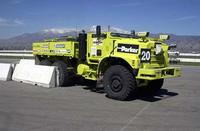
At the break of dawn on 13 March 2004, fifteen vehicles left a starting gate in the desert outside of Barstow, California, to make history in the DARPA Grand Challenge, a first-of-its-kind race to foster the development of self-driving ground vehicles. It is not easy to quantify the effects of these DARPA challenges on the development and deployment of autonomous vehicle technology, but ten years later defense and commercial applications are proliferating. The rapid evolution of the technology and rules for how to deploy it are being driven by the information technology and automotive industries, academic and research institutions, the Defense Department and its contractors, and federal and state transportation agencies.
-
-
China's share of rare earths minerals declining amid falling demand
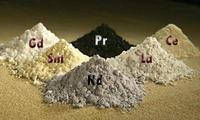
China still dominates the world’s rare earth elements market, but its share in global production has been steadily decreasing in recent years. A new study which shows a dramatic decline in these minerals’ prices has shaken he industry. In 2013, China accounted for 92.1 percent of high-tech rare earth oxides produced in the world. The percentage is still high, but it is a decline from 2010, when China accounted for 97.6 percent of global production of the mineral and fell to 95.1 percent in 2011.
-
-
Value of U.S. mineral production decreased in 2013
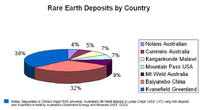
Last year, the estimated value of mineral production in the United States was $74.3 billion, a slight decrease from $75.8 billion in 2012. According to the U.S. Geological Survey’s annual Mineral Commodity Summaries 2014 report, the 2013 decrease follows three consecutive years of increases. Net U.S. exports of mineral raw materials and old scrap contributed an additional $15.8 billion to the U.S. economy.
-
-
Innovative solar-powered toilet to be unveiled in India next week
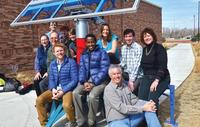
Unsafe methods to capture and treat human waste result in serious health problems and death — food and water tainted with pathogens from fecal matter results in the deaths of roughly 700,000 children each year. A revolutionary toilet fueled by the sun is being developed by University of Colorado Boulder researchers to help some of the 2.5 billion people around the world lacking safe and sustainable sanitation. It will be unveiled in India this month.
-
-
Radiation from Fukushima to reach West Coast in April
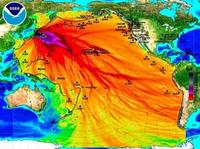
On the third anniversary of the Fukushima nuclear plant incident, scientists are reporting that low levels of radiation from the Fukushima plant will reach ocean waters along the U.S. West Coast by April 2014. The scientists say that the radiation will be at levels too low to harm humans, but they call for more monitoring, including at the federal level.
-
-
Iona College to Launch BS, BA, MS concentrations in cybersecurity
Iona College announced the launch in fall 2014 of undergraduate and graduate programs in computer science with a concentration in cyber security. The concentration will be offered for the Bachelor of Science, Bachelor of Arts, and the Master of Science degrees. The programs will provide students with fundamental cyber security skills, theoretical as well as hands-on experience. Students are exposed to new research ideas across many cyber security areas including software security, Web application security, mobile security, networking security, database security, and cryptography.
-
-
Wisconsin YES youth business plan contest helps promote STEM education
The number of skilled individuals needed in STEM industries is enormous, and growing, making it more and more crucial to promote the education of students in these disciplines. Wisconsin Yes! Aims to foster interest in science and tech education and encourages students to be independent, creative thinkers capable of problem solving. The statewide Wisconsin YES! youth business plan contest will close to entries 5 p.m. Monday, 17 March. Public, private, and home-schooled students across Wisconsin are eligible to turn their science- and tech-related ideas into business plans and compete for cash and prizes.
-
-
Examining fire safety concerns raised by green buildings
In 2012, the “Fire Safety Challenges of Green Buildings” report assembled a list of seventy-eight green building features and construction elements that could have implications for fire safety. The authors then derived a list of potential hazards associated with the features and elements, including greater flammability, faster burn rate, and increased hindrance to firefighters, as compared with conventional construction. A 3-year project, funded with a $1 million grant from DHS, will enable the further exploration of some of the potential risks and hazards identified in the 2012 report.
-
-
Determining long-term effects of West Virginia chemical spill
A chemical mixture called crude 4-methylcyclohexane methanol (MCHM) is used during the separation and cleaning of coal products. More than 10,000 gallons of the chemical leaked from a storage tank near Charleston, West Virginia, and entered the river upstream of a water-treatment plant on 9 January. The drinking water of more than 300,000 West Virginians was contaminated. Water restrictions began to be lifted on 13 January, but residents are still detecting the telltale odors of MCHM. Virginia Tech faculty engineers and students are unravelling fundamental chemical and health properties of MCHM.
-
-
“Encouraged” bacteria cleaning up more effectively after oil spills
Bioremediation is nature’s way of cleaning up. Plants, bacterial decomposers, or enzymes are used to remove contaminants and restore the balance of nature in the wake of pollution incidents. What is surprising is that given the right kind of encouragement, bacteria can be even more effective. Researchers in Norway have achieved surprising results by exploiting nature’s own ability to clean up after oil spills.
-
-
New technique allows better monitoring of water quality
Researchers have developed a new technique that uses existing technology to allow researchers and natural resource managers to collect significantly more information on water quality to better inform policy decisions. In addition to its utility for natural resource managers, the technique will also allow researchers to develop more sophisticated models that address water quality questions.
-
-
High level of “brain waste” among highly educated immigrants
Many highly educated immigrants coming to the United States without a job lined up have been unable to find work at their level of education, leading to considerable “brain waste,” researchers have found. The prevalence of such “brain waste” exceeded 40 percent for immigrants with a bachelor’s degree, 50 percent for those with a doctoral or professional degree, and 75 percent for those with a master’s degree.
-
More headlines
The long view
A Shining Star in a Contentious Legacy: Could Marty Makary Be the Saving Grace of a Divisive Presidency?
While much of the Trump administration has sparked controversy, the FDA’s consumer-first reforms may be remembered as its brightest legacy. From AI-driven drug reviews to bans on artificial dyes, the FDA’s agenda resonates with the public in ways few Trump-era policies have.
Risk Assessment with Machine Learning
Researchers utilize geological survey data and machine learning algorithms for accurately predicting liquefaction risk in earthquake-prone areas.
Foundation for U.S. Breakthroughs Feels Shakier to Researchers
With each dollar of its grants, the National Institutes of Health —the world’s largest funder of biomedical research —generates, on average, $2.56 worth of economic activity across all 50 states. NIH grants also support more than 400,000 U.S. jobs, and have been a central force in establishing the country’s dominance in medical research. Waves of funding cuts and grant terminations under the second Trump administration are a threat to the U.S. status as driver of scientific progress, and to the nation’s economy.
The True Cost of Abandoning Science
“We now face a choice: to remain at the vanguard of scientific inquiry through sound investment, or to cede our leadership and watch others answer the big questions that have confounded humanity for millennia —and reap the rewards.”
Bookshelf: Smartphones Shape War in Hyperconnected World
The smartphone is helping to shape the conduct and representation of contemporary war. A new book argues that as an operative device, the smartphone is now “being used as a central weapon of war.”
New Approach Detects Adversarial Attacks in Multimodal AI Systems
New vulnerabilities have emerged with the rapid advancement and adoption of multimodal foundational AI models, significantly expanding the potential for cybersecurity attacks. Topological signatures key to revealing attacks, identifying origins of threats.
